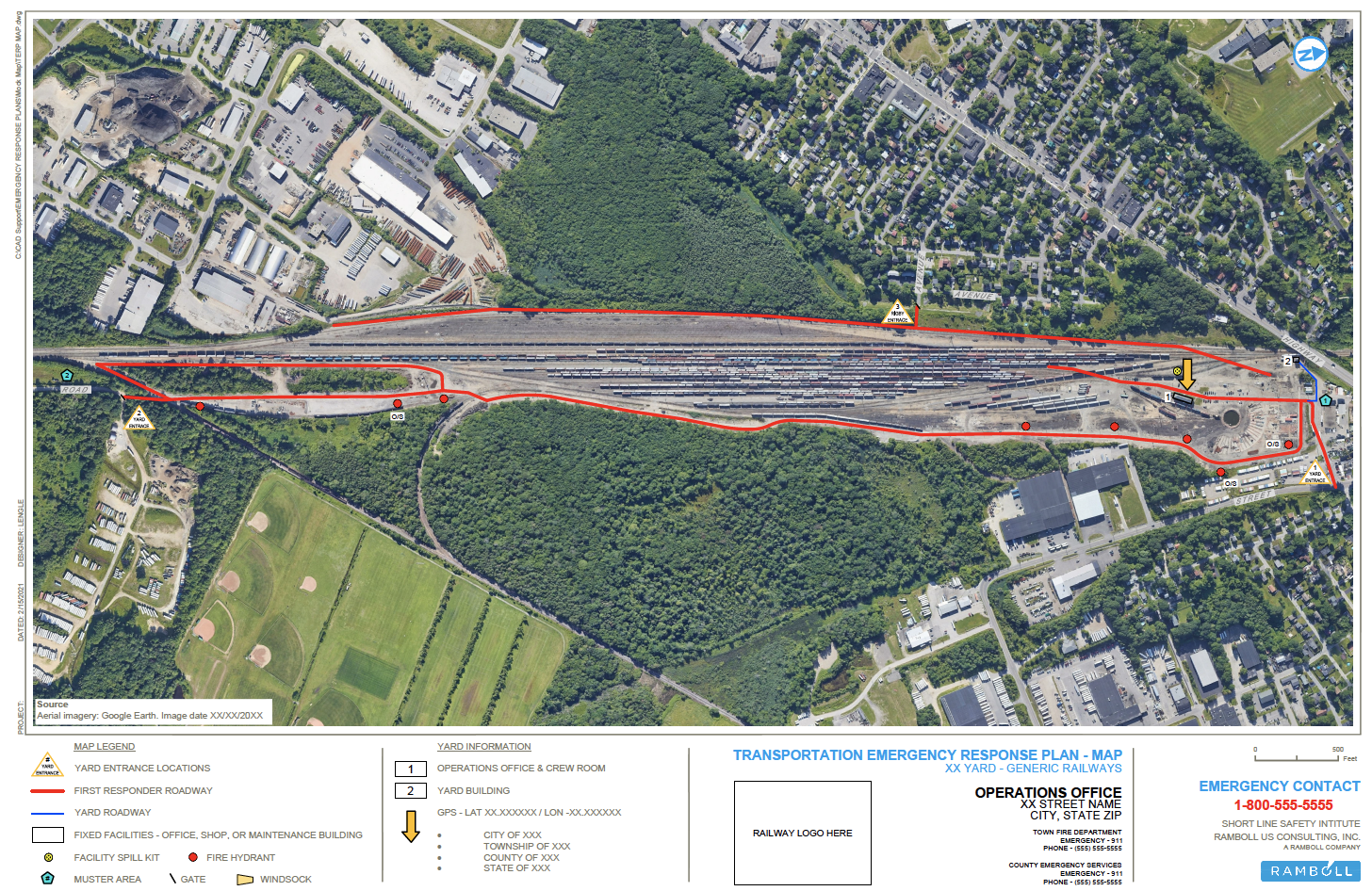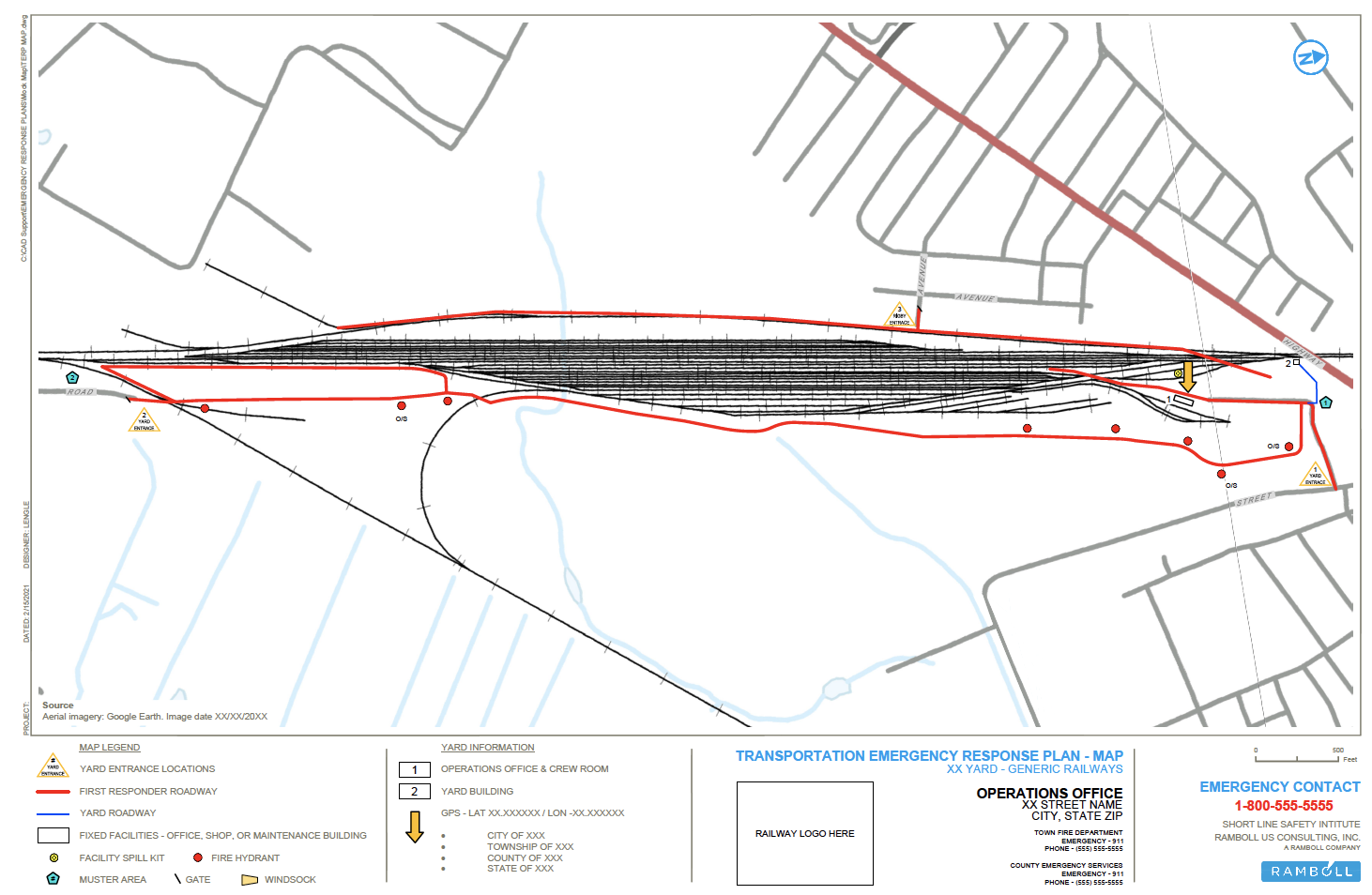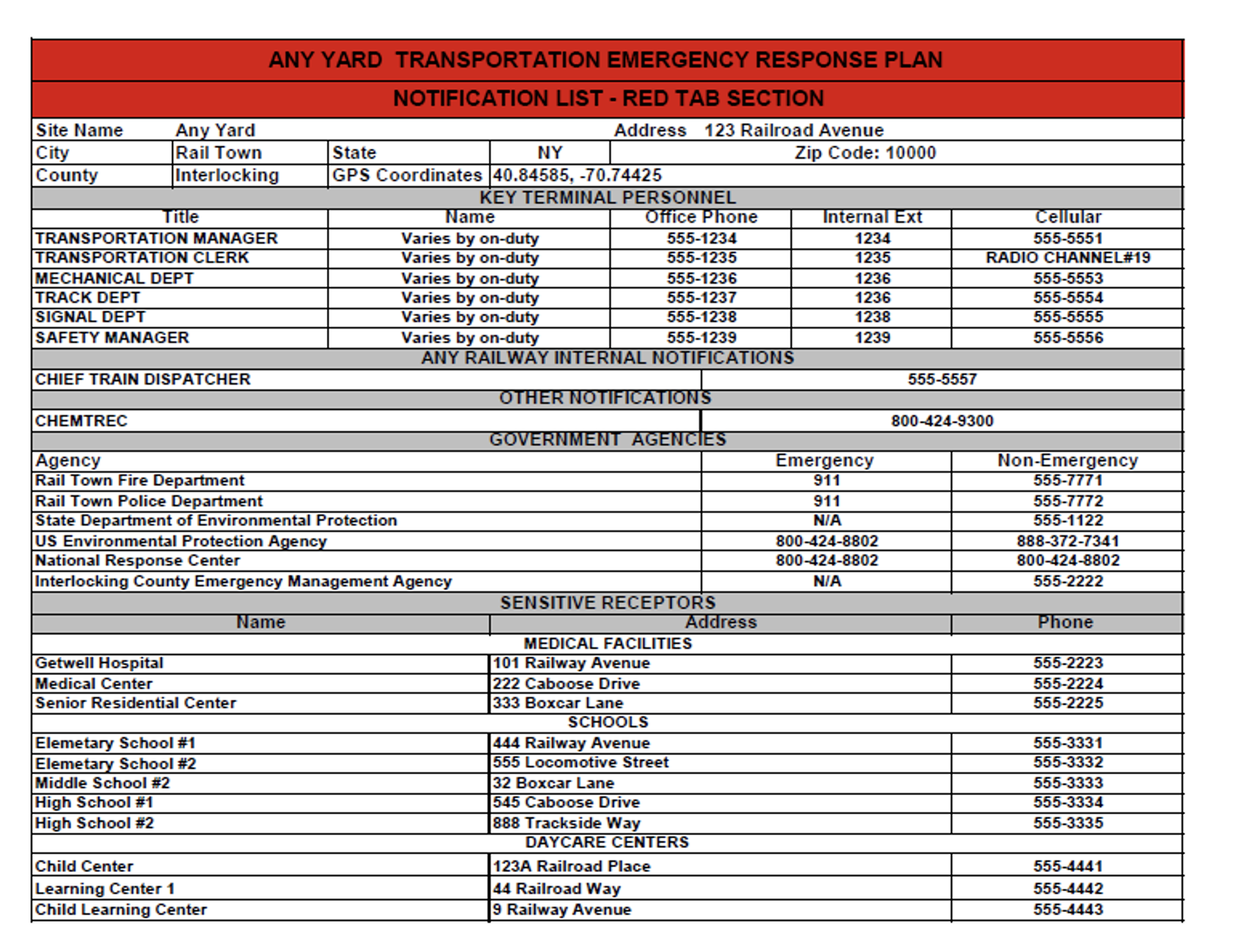The Short Line Safety Institute (SLSI) offers the short line and regional railroad industry assistance in developing and documenting a Transportation Emergency Response Plan (TERP) specific to their location and operations.
The Plan
The final TERP is provided in electronic and hard copy format. It is a valuable training and guidance document that railroads can use to prepare their employees for safely responding to hazardous materials incidents and other emergencies.
The document includes detailed hi-resolution maps identifying physical features of the railroad’s yard(s) and location of key assets for incident response and emergency access routes. Roadways that can accommodate large emergency vehicles will also be identified.
A “red tab” section contains contact information for key personnel and government agencies and identifies sensitive receptors such as hospitals and schools within a one-mile radius of the yard with contact information. This section can be shared with local first responders.
The Process
The plan is completed in three steps:
-
- An initial phone call to obtain background information and details of the operation and physical railyard;
- A site visit performed by a member of the SLSI team to complete the mapping process;
- Review of plan with management and delivery of materials.
The plan can be successfully created within CDC guidelines for COVID-19, and any railroad-specific or local health and safety measures.
Creating a TERP is available at no cost to the requesting short line or regional railroad through a grant from the Pipeline and Hazardous Materials Safety Administration (PHMSA).
Create a TERP for your railroad
Work with a member of our expert team on your railroad’s plan.
TERP Form


Each TERP includes a detailed map of the railyard, with critical assets and roads able to handle emergency vehicles noted.

The final TERP document includes a “red tab” section with contact information for sensitive receptors within a one-mile radius, and employees.

